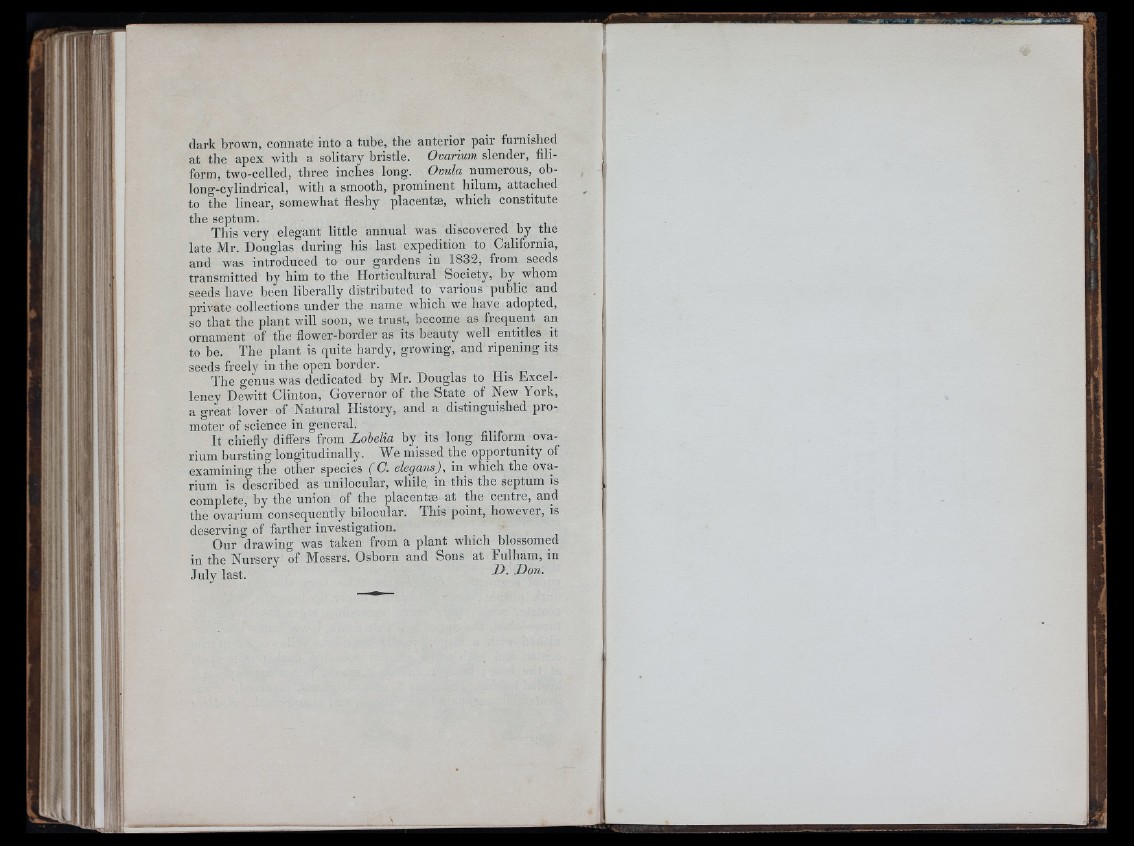
dark brown, connate into a tube, tbe anterior pair furnished
at the apex with a solitary bristle. Ovarium slender, filiform,
two-celled, three inches long. Ovula numerous, oblong
cylindrical, with a smooth, prominent hilum, attached
to the linear, somewhat fleshy placentæ, which constitute
the septum.
This very elegant little annual was discovered by the
late Mr. Douglas during his last expedition to California,
and W’as introduced to our gardens in 1832, from seeds
transmitted by him to the Horticultural Society, by whom
seeds have been liberally distributed to various public and
private collections under the name which we have adopted,
so that the plant will soon, we trust, become as frequent an
ornament of the flower-border as its beauty well entitles it
to be. The plant is quite hardy, growing, and ripening its
seeds freely in the open border.
The genus was dedicated by Mr. Douglas to His Excellency
Dewitt Clinton, Covernor of the State of New York,
a great lover of Natural History, and a distinguished promoter
of science in general.
It chiefly differs from Lobelia by its long filiform ovarium
bursting longitudinally. We missed the opportunity of
examining the other species ( C. elegans), in which the ovarium
is described as unilocular, while, in this the septum is
complete, by the union of the placentæ at the centre, and
the ovarium consequently bilocular. This point, however, is
deserving of farther investigation.
Our drawing was taken from a plant which blossomed
in the Nursery of Messrs. Osborn and Sons at Fulham, in
July last. ^ o n .